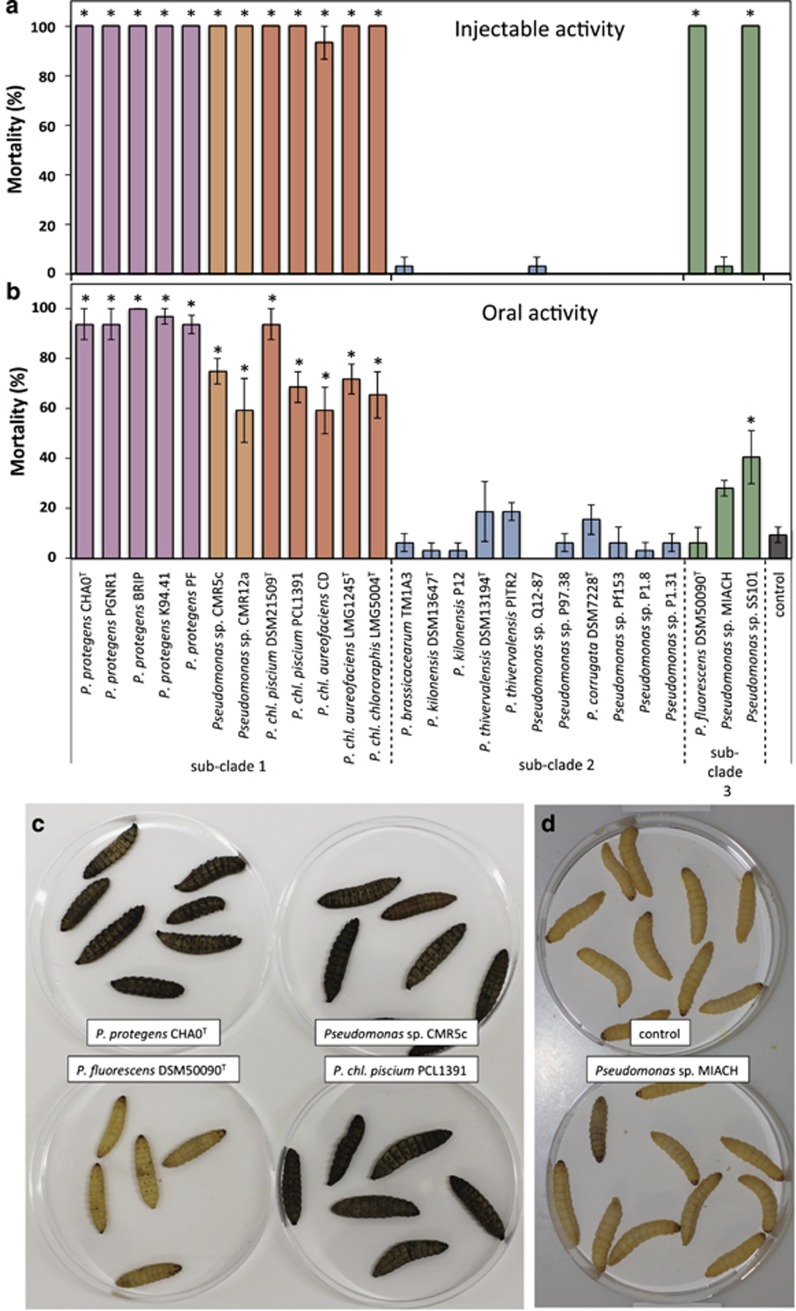Figure 3.
Oral and systemic insecticidal activity is restricted to strains of specific phylogenetic subgroups within the P. fluorescens group. (a) Systemic activity against G. mellonella. Larvae were injected with 4 × 104 bacterial cells. Bars show average mortality of three replicates with 10 larvae after 48 h. The experiment was repeated twice and highly similar results were obtained. (b) Oral activity against P. xylostella. Larvae were exposed to artificial diet covered with 8 × 107 bacterial cells. Bars show average mortality of four replicates with eight larvae after 3 days. The experiment was repeated and similar results were obtained (Supplementary Table S4). Error bars show s.e.m. Asterisks indicate strains that were significantly different from control larvae treated with 0.9% NaCl based on multiple comparisons by Kruskal–Wallis adjusted by Bonferroni–Holm (P⩽0.05). (c) Typical melanization symptoms observed after 32 h in infections with P. protegens CHA0T, P. chlororaphis subsp. piscium PCL1391, Pseudomonas sp. CMR5c, but not with P. fluorescens DSM 50090T. (d) Although larvae injected with Pseudomonas sp. MIACH do not die, they become slightly melanized compared with control larvae. P. chl., Pseudomonas chlororaphis.

